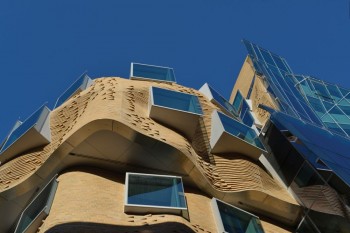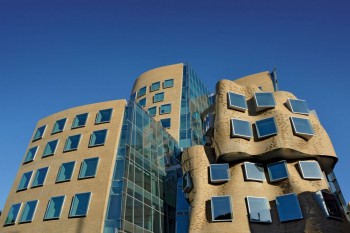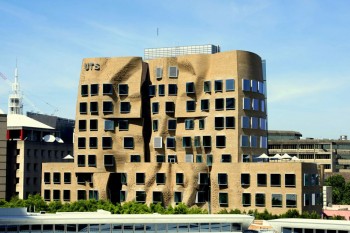Celebrating the Unconventional
Clay brick may be accepted as a conventional building material, but the Dr Chau Chak Wing Building of the University of Technology Sydney Australia shows that it's modular nature makes it the ideal building material for unconventional structures. Only clay brick could handle this sculptural, twisting tower of endless folds, dips and curves.
Made up of 320,000 individually lain bricks, this material choice relates to the history of this suburb, which is dotted with old industrial brick buildings. Five brick shapes will be used, each with a specific function for the facade ''which does not have one straight line''. The ''K-brick'', for example, has been designed with an angled protrusion to create the required bends and shadowing.
Achieving the fluid appearance of the brickwork proved a technical feat that involved corbelling (stepping) individual bricks to articulate the building’s organic shape. The light-coloured bricks – around 320,000 in total – were custom made for the building and reference Sydney’s sandstone heritage.
Clay brick is one of the few building materials that can complement both classic and contemporary architectural styles. The brick works well with other natural materials used such as the laminated timber beams from New Zealand and is a foil for the sculptural polished stainless steel staircase in the main lobby.
Sustainability
The building sets a new benchmark for the campus in terms of environmentally sustainable design, and achieves at least 5 - Star Green Star Rating. Sustainability features incorporated into the building include:
- energy saving strategy to deliver a 30% – 45% energy saving over benchmark tertiary educational buildings with similar functional spaces
- 45% shading co-efficient of the external ‘binary code’ screen estimated to bring about a 10% – 15% operational energy saving
- solar collector array, an atrium skylight which provides filtered daylight to the atrium
- under-floor air distribution system
- low-energy lighting
- rainwater harvesting from the roof utilized for cooling towers and dual flush toilets
About the Design
Mr Gehry is the designer of some of the world’s most famous modern buildings, including the Guggenheim Museum in Bilbao, Spain, and the Walt Disney Concert Hall in Los Angeles. At the buildings opening, Architect Frank Gehry said that he was inspired by Sydney's nineteenth-century architecture, which he prefer to its newer glass-dominated buildings.
"Concrete is faceless, unfriendly, and it's cold," he said. “There is a warmth and humanity about brick, so that is how I got the idea of using brick … ”




